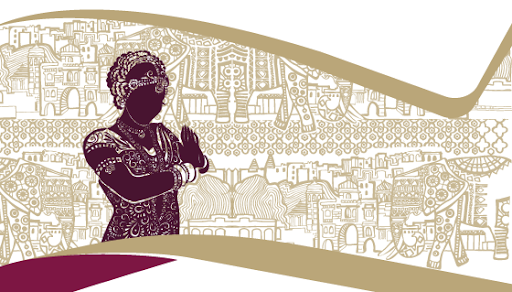The Evolution of Indian Architecture
Share The Evolution of Indian Architecture
Indian architecture has been influenced by history, culture and religion. It has been shaped over time, and different eras have had an impact on the design and visual appeal. Colonisation and discourse with other countries have added additional layers to Indian architecture with influences and remnants seen even today in many parts of the country.
The rise and fall of various civilisations, dynasties and external influences in India have played a significant role in moulding the architectural styles of the country. Let’s delve into the evolution of Indian architecture through history.
Harrapan civilization architecture
The Harrapans were an ancient tribe of people who were part of the Indus Valley Civilization from 3300 BCE to 1300 BCE. Harrapan architecture is considered to be ahead of its time. The cities of Mohenjo-Daro and Harrapa consisted of well-planned grids with broad main roads and smaller lanes that intersected at right angles. Grid patterns in bricks, a well-defined city layout, impeccable drainage systems, high city walls and multi-storeyed homes were prominent features of architecture during the Indus Valley Civilization. The entire city was more functional than decorative, and every piece of architecture served a specific purpose.
Rock-cut architecture
Rock-cut architecture refers to structures, sculptures and buildings that were carved out of a single solid natural rock, right where it stood. India is most famous around the world for its rock-cut architecture, with over 1500 known structures that have gained global importance. The oldest among these are the Barabar Caves in Bihar which were discovered in 3rd century BC. Another world famous rock-cut sculptures include the Ellora Caves, the Ajanta Caves and several of the sculptures at Mahabalipuram.
Temple architecture
Temple architecture is one of the most important aspects of Indian architecture. Ancient Indian temple architecture is divided into three broad styles namely the Nagara or the Northern style, the Dravida or the Southern style and the Vesara or mixed style. One prominent feature or theme followed through all temple architecture is the decoration. Ancient Indian temples were more focussed on embellishments which were reflected in the intricate details of figured sculptures and architectural elements.
Though all three styles were different in their own right, there were several common features that they shared. For instance, every temple had a garbha-griha or a sanctum sanctorum that housed the deity of the temple. Each garbha-griha had a circumambulation passage around it. Other features included gopuras, sikhara and gateways.
Indo-Islamic architecture
The medieval period witnessed several changes in India’s architecture. With the arrival of Muslims in India, many architectural designs and techniques were incorporated in existing buildings which gave rise to Indo-Islamic architecture. This unique style combined Hindu and Islamic architecture and can be broadly divided into Mughal architecture and Architecture of the Delhi Sultanate or the Imperial Style.
Mughal architecture is a unique combination of Central Asian, Islamic, Persian, Arabic and Turkish architectural styles. It is characterised by huge bulbous shaped domes, large halls, colossal gateways and sleek minarets.
The Imperial Style, on the other hand, features elaborately embellished arches and domes. Floral patterns were common, as well as other Hindu motifs like lotuses and swastikas juxtaposed with verses from the Quran.
British indo-saracenic architecture
Indo-Saracenic architecture was the styles used by the British in India in the latter half of the 19th century. You can see this style of architecture in public and government buildings. It drew decorative elements from the Indo-Islamic architecture in India and global styles namely the gothic revival and neo-classical forms. The Madras High Court in Chennai and Victoria Terminus in Mumbai are perfect examples of this style.
The shift from ancient to modern
The growing economy and population have given rise to massive housing needs. Globalisation and exposure to the world have caused a shift in Indian architecture. Today, most structures consist of glass and designer shapes and styles. Architects and designers push the boundaries of style with every new project, trying to stamp their individuality.
Architecture in luxury housing
Today, one of the fastest growing segments in Indian reality is the luxury housing market. Luxury, however, is relative. Luxury living does not mean size or material; it is more to do with how well you use your space and the quality of design. Luxury homes in India are all about quality of construction, the magnitude of property, technological competence, automation in security systems and smart living feasibility – all of this found in coveted locations.
This article is sponsored by House of Hiranandani
Request a Call Back

